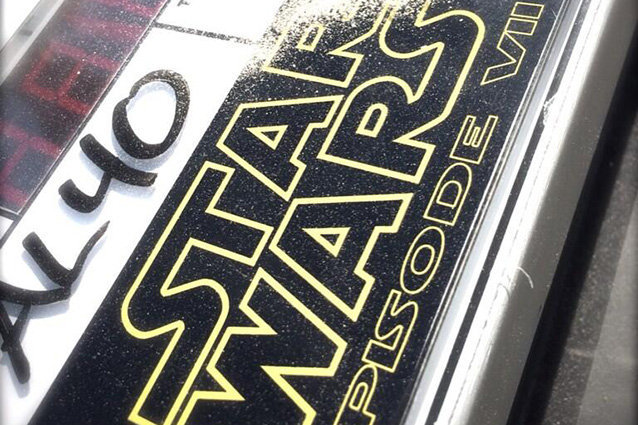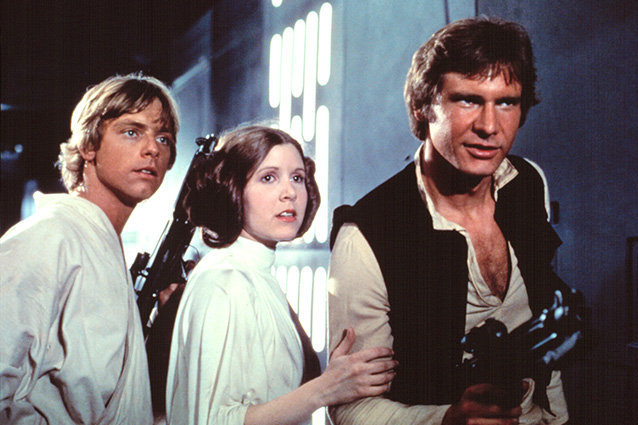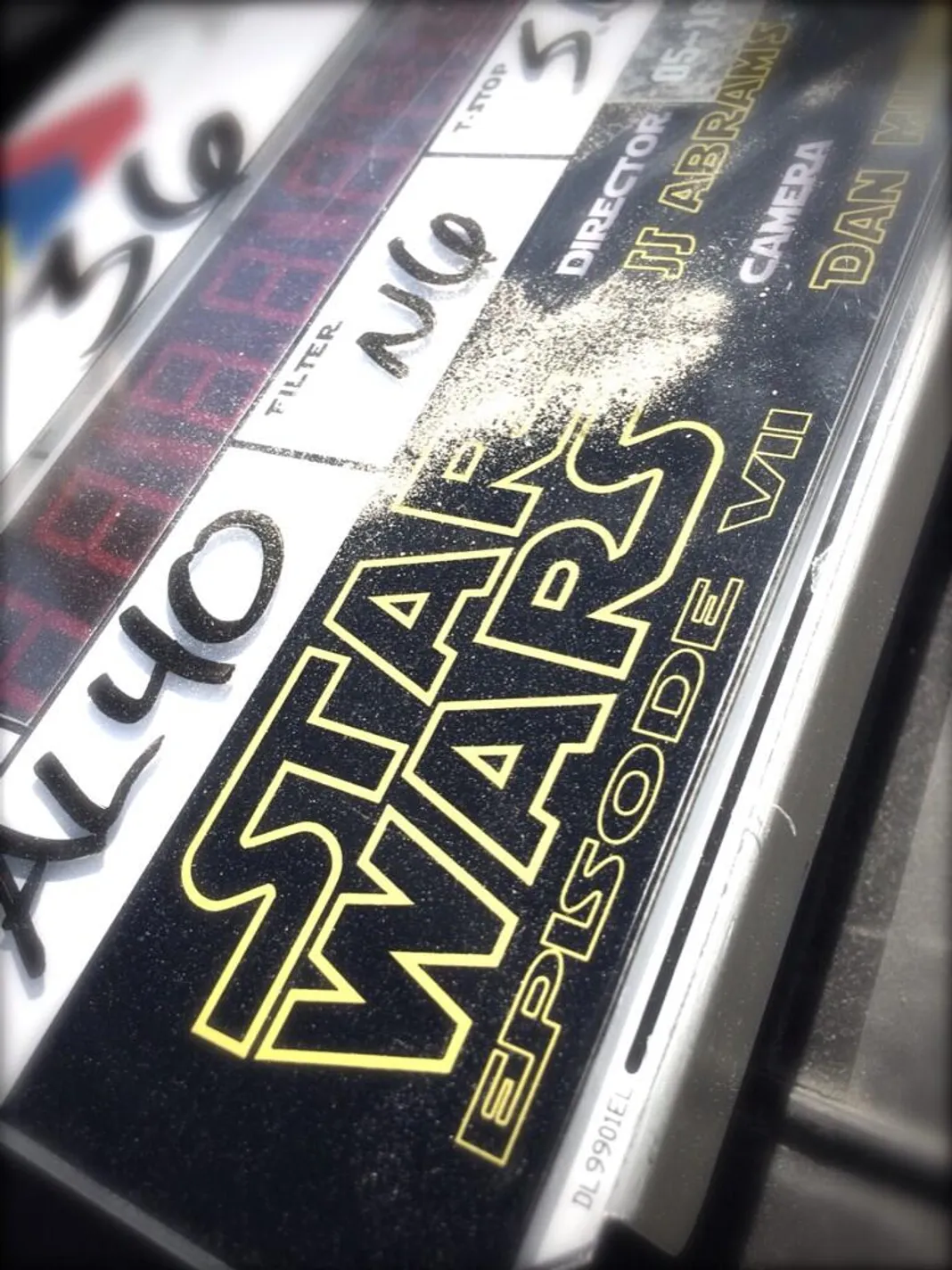 Twitter/bad_robot
Twitter/bad_robot
It has begun. After what felt like an eternity of rumors, casting calls, blind hearsay, and yet even more rumors, Star Wars: Episode VII is finally finally filming. In the wee hours of the morning, Director J.J. Abrams signaled the start of filming with a tweet from the Bad Robot twitter account showing a picture of a production clapper bearing title of the sequel, along with the caption “#dayone.” Like the pop of a marathon gun, the race to shoot a great Star Wars sequel is on, but now comes the hard part. Shooting a blockbuster, and especially shooting a Star Wars blockbuster, is not a task for the faint of heart, and series creator George Lucas struggled mightily to complete his epic space opera. The production of the original film was plagued with setbacks, and it’s frankly a miracle that we’re even celebrating the creation of a seventh Star Wars film given the barriers Lucas had to overcome to get his originall film made. Take a look at all the stumbles, issues, and setbacks involved with creating the first Star Wars.
The film was rejected twice before finding a distributor
Back when the billion dollar franchise was just a few scrawled notes and a big idea, George Lucas approached United Artist with a pitch for a space opera called The Star Wars. The studio passed on the idea, and Lucas went on to make American Graffiti before returning to his Star Wars project two years later. After tinkering with the story, Lucas wrote a 13-page treatment for the project and presented it this time to Universal, who similarly rejected it, deeming it too strange and complaining that science fiction wasn’t popular enough at the time to merit such an expensive film. The film was eventualy picked up by 20th Century Fox, and the rest was history.
Filming in Tunisia was a pain
Lucas originally envisioned Tatooine as a lush jungle planet, but the idea of shooting on location in a jungle seemed more problematic than it was worth, so Lucas decided to change the home of the Skywalkers into a desert planet instead, and began filming in Tunisia. Unfortunately for Lucas, the switch in shooting locations wasn’t without its own issues. Shooting fell behind schedule when the set was hit with a rare Tunisian rainstorm. The set was also plagued with electronic breakdowns and prop malfunctions, one of which injured C-3P0 actor Anthony Daniels.
And no one seemed to care about the project except for Lucas
Before Star Wars began making actual dividends, the film had it’s fair share of doubters, as any film would, but even the cast and crew had a hard time taking Lucas and his epic space opera seriously. Much of the crew laughed off the project as a kid’s film and rarely put in their all into filming. Kenny Baker, who played R2D2, thought the film would be a massive failure. Even Harrison Ford had his doubts, remarking how weird some elements of the film were, including Princess Leia’s buns and Chewbacca, who he claimed looked like a “giant in a monkey suit.”

Lucas’ own frustrations hampered the film
Facing a film that was grossly overbudget and well behind schedule, the enormity of blockbuster filmmaking became almost too much for Lucas. The director frequently clashed with his crew over creative differences and was largely dissatisfied with the look of costumes and sets, most of which failed to live up to his vision. He became visibly depressed and passed on his frustrations to his actors while providing little in the way of direction. Things got so bad that during post-production, the filmmaker was diagnosed with hypertension and exhaustion, and was warned to slow down by doctors.
The first cut was a complete disaster
After struggling to get his film finished on time, Lucas was disappointed to learn that the first cut of the film was, in his eyes, a “complete disaster.” The first edit by film editor John Jumpson was so bad, it is said that 30 to 40 percent of the footage didn’t make it to the final version of the film. Lucas ended up switching his editing team, employing his wife, Paul Hirsch, and Richard Chew to finish the job right.
The greatest directors of the time weren’t crazy about it
In 1977, Lucas screened a rough cut of the film for some of his directing buddies, a list that now reads like a who’s who of legendary directors, including Steven Spielberg, Brian De Pama, and John Milius. The cut was the very definition of rough. James Earl Jones signature baritone wasn’t the voice behind Darth Vader, paper arrows stood in for blaster beams, and instead of a space battle between the Millennium Falcon and TIE fighters, footage of WWII dogfights was spliced in. Reaction to this early cut of the film was lukewarm at best, with Spielberg being the only one of the directors who clearly enjoyed the film. On the other hand, the studio execs greatly enjoyed the early cut of the film, with producer Gareth Wigan saying, “This is the greatest film I’ve ever seen.”


